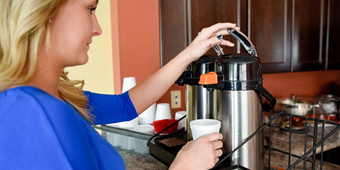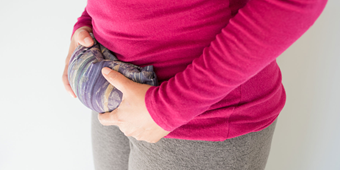Will Urine Leakage and Pelvic Organ Prolapse Happen to Me?

Find Your Perfect Match
Answer a few questions and we'll provide you with a list of primary care providers that best fit your needs.
As women, one out of three of us will experience a pelvic floor disorder (PFD) such as pelvic organ slippage (also known as pelvic organ prolapse) or bladder control problems such as title=urine leakage;Urinary Incontinence. PFDs occur when we have weakened pelvic muscles or tears in the connective tissue.
Are you at risk? The good news is that you can control some of these risk factors. Learn more and take the quiz.
Life stage factors
“There are different times in their lives when women may be more at risk for developing a pelvic floor disorder,” explains Joel Metze, MD, a urogynecologist with Lifestages Centers for Women. These life stages include:
- Pregnancy/childbirth: Vaginal births double the rate of pelvic floor disorders compared to Cesarean deliveries or for women who never gave birth.
- Menopause: The pelvic floor muscles often weaken during menopause.
- Senior: The strength of the pelvic floor deteriorates as women age.
At-birth factors
Some risk factors can’t be controlled. One is genetics. “If your mother or sister has a pelvic floor disorder, you’re at higher risk for developing one,” Dr. Metze explains.
Your race also may affect your risk. “Caucasian women are more likely to develop prolapse and have urine leakage related to coughing, sneezing, and activities. African-American women are more likely to have urinary leakage related to urgency,” he says.
Lifestyle factors
Dr. Metze recommends taking a look at these lifestyle factors to see if you can make some changes to reduce your risk:
- Smoking: Women who smoke are at higher risk for developing bladder control problems.
- Drinking lots of caffeine: Heavy caffeine consumption can bring on the urge to void.
- Heavy lifting/exertion: Occupations and physical activities that require heavy lifting or intense repetitive strenuous activity increase your risk.
- Obesity: Overweight women are at increased risk. Obese women have a 40 to 75% increased risk of pelvic organ prolapse.
- Diet: Too little fiber or water in your diet can lead to constipation and straining, which increases your risk.
Health problems/medical history
These conditions also can lead to a pelvic floor disorder:
- Pelvic injury/surgery: Loss of pelvic support can occur when the pelvic floor is injured from falls, car accidents or surgery.
- Lung conditions/chronic coughing: Chronic respiratory disorders can increase the risk of PFDs.
- Sexual dysfunction: Pelvic floor symptoms are significantly associated with reduced sexual arousal, infrequent orgasm and painful intercourse (known in medical terms as dyspareunia)
- Conditions or injuries that affect the nerves: Diabetes, Parkinson’s disease, stroke, back surgery or spinal stenosis can weaken the pelvic floor muscles.
- Emotional stress: Can make you feel anxious and that you need to go.
“Remember, although urine leakage and other pelvic floor disorders are common, they are not normal at any age,” cautions Dr. Metze. “Reducing risk factors that you can control is an important step in addressing the problem.”
Find Your Perfect Match
Answer a few questions and we'll provide you with a list of primary care providers that best fit your needs.
Source: American Urogynecologic Society; Quiz: Female Incontinence; Joel Metze, MD, Lifestages Centers for Women





